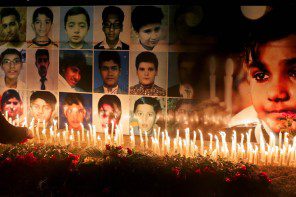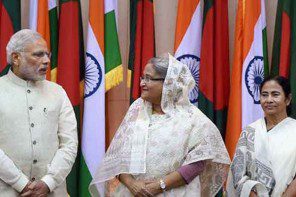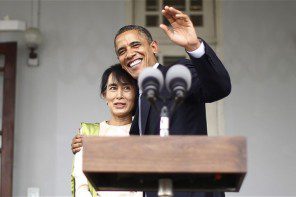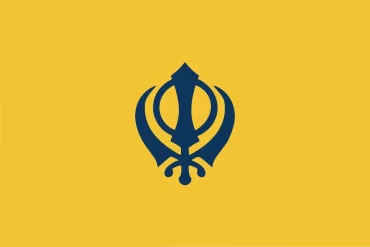Speakers at an international seminar in Dhaka held on 18 January opined that South Asian Association for Regional Cooperation (SAARC) couldn’t fulfil the peoples’ expectation because the leaders of the region lack political commitment. What was more important at the seminar is that the speakers demanded a “visa-free South Asia” where peoples from the entre region would move freely as citizens of a union – the South Asian Union.
Well, no-one would deny the fact that SAARC is still far away from realizing the dreams that the peoples of the eight countries nurture. However, the demand for a “visa-free South Asia” isn’t an old demand. The regional activists as well as members of the civil society have been putting this demand forward for quite some time. This demand would certainly be supported by any citizen of South Asian countries, but the questions would arise: is it a proper time to seek visa-free movement among the member-states? Would the political leaders of these countries even consider this demand?
The reason why this demand may not at all be considered because SAARC as a regional body has for years grappled with inter-state, intra-state and regional conflicts. Inter-state conflicts and the bilateral interests of member-states have a decisive influence on the achievements of SAARC. The lack of trust among member states has often manifested itself in the ineffective administration of several of the initiatives taken by the SAARC. Moreover, the regional body has also been influenced by external players and other regional organizations.
Apart from the continuing India-Pakistan conflict, a concern that has often come up at SAARC forums is the dominant position of bigger states, particularly India, in the regional set-up. The discrepancy of size and power between India, a nation of over 1 billion people, and all its neighbours, leads to natural concerns among the latter about India’s dominance in the region and potential interference in their affairs. At different times this has been a significant strand in the policy thinking of states such as Bangladesh, Nepal and Sri Lanka; and has led them to seek security assistance first and foremost from outside South Asia when they need it.
If we look at Kashmir, it has been a dispute which has resulted in two major wars in the region. Years of conflict over Kashmir issue have created an atmosphere of deep mistrust between the two countries. Given the current situation, if India and Pakistan don’t change their mind set and reduce and forget the animosity that has existed for several decades, these two countries would not be ready for visa-free movement.
Then there’s Siachen issue between them. Siachen Glacier region is the highest battleground on earth, where India and Pakistan have fought intermittently since April 1984. Both countries maintain permanent military presence in the region at a height of over 6,000 metres. The site is one of the most eminent examples of mountain warfare.
Both the countries have wished to disengage from the costly military outposts. However, after the Pakistani incursions during the Kargil war in 1999, India abandoned plans to withdraw from Siachen unless there’s an official recognition of the current line of control by Pakistan, wary of further Pakistani incursions if they vacate the Siachen Glacier posts without such recognition.
At Sir Creek, the dispute lies in the interpretation of the maritime boundary line between Kutch and Sindh. Before India’s independence, the provincial region was a part of Bombay Presidency of British India. After ’47, Sindh became a part of Pakistan while Kutch remained a part of India. Pakistan lays claim to the entire creek. Obviously, India says the opposite.
Both Islamabad and Delhi are having dialogue regarding the Baglihar dam being built over River Chenab in İndian-administered Kashmir.
They are tangled in a bigger conflict at present. On several occasions there have been blames from both sides – India and Pakistan – on each other for carrying out terrorist activities or supporting such acts in their countries. As long as the global war on terror continues, these two countries will have issues against each-other regarding terrorism.
Now, if you have a look at the Pakistan-Afghanistan relations, the Afghan government doesn’t recognize the Durand Line as the official border between the two states, claiming that the Durand Line Agreement has been void in the past due to violations by Pakistan as well as other reasons. Pakistan, on the other side, issued a warning to Afghanistan that it would not “tolerate any violations of its borders”.
Then again, Pakistan has decided to shut down refugee camps under increasing pressure to crack down on crossborder militancy.
On the India-Bangladesh, Dhaka wants a fair share of Ganga river by opposing the construction of Farrakha Barrage in India. The alleged illegal immigration of Bangladeshis into India has been an objection from the Indian side for a long time. If the illegal migration is a fact, New Delhi would never agree to a visa-free region. And when one looks at the barbed-wire fence around Bangladesh, one should not ever dream of a visa-free South Asia. India hasn’t raised the fence for allowing “movements”; it wants to prevent movements.
As far as Bangladesh is concerned, it has recently lodged a protest against Indian border guards’ shooting down innocent Bangladeshis. Indian border force routinely gun down civilians crossing the border with Bangladesh despite negligible evidence of any crime. Over 900 Bangladeshi nationals have been killed by the BSF over the last decade, many of them when they crossed into Indian territory for cattle rustling or other smuggling activities. Bangladesh may have shown very soft attitude while lodging the protest, the voices against border killings is likely to gain strength in Bangladesh. And this may become an irritant in Dhaka-Delhi ties.
In northern South Asia, Nepal and Bhutan have been locked in diplomatic brawl over repatriation of Bhutanese refuges in Nepal. And due to the open border between India and Nepal, thousands of them have entered India. These refugees represent different Nepalese ethnic and caste groups, but it does not mean that they have directly migrated to Bhutan from Nepal. Lots of them have migrated from different parts of eastern and north-eastern India as well. Nearly 100,000 Bhutanese refugees are resettled in the camps in Jhapa and Morang districts. Though they live in the closed camps with barbed-wire fencing, their movements outside are not restricted, and they are also able to cross the fence easily. This has affected the natural, social and economic environment of the surrounding areas, because they are engaged in illegal cutting of trees in Indian government forests, are engaged in business and work as cheap labour thereby affecting the business and employment of the local community. It is also alleged that a lot of Bhutanese refugees have been able to secure Nepalese citizenship through illegal means.
It is not known when the Bhutanese refugee problem will be solved.
Now, the above issues are just a few conflicts and disputes that are working as stumbling blocks for South Asia to prosper as a region. And as long as these problems persist among the member-states, a “visa-free” South Asia would only be a dream. The real visa-free region is, in fact, is long way off. Therefore, it would be an immensely futile effort on part of regional activists to demand a visa-free region.
What seems more important among the SAARC countries is “conflict resolution”. Apart from the conflicts between member-states, there is also disagreement among them on the need for a South Asian conflict resolution mechanism to deal with bilateral disputes. India, Nepal and Sri Lanka are not in favour of conflict resolution as a domain of the SAARC. However, the SAARC has shown potential for emerging as a forum for dialogue, negotiation, preventive diplomacy and confidence and peace-building.
The urgent task would be to promote peace-building through conflict resolution. Any activism in the region without resolving conflicts would be a waste of time.
The Writer is A Journalist.






